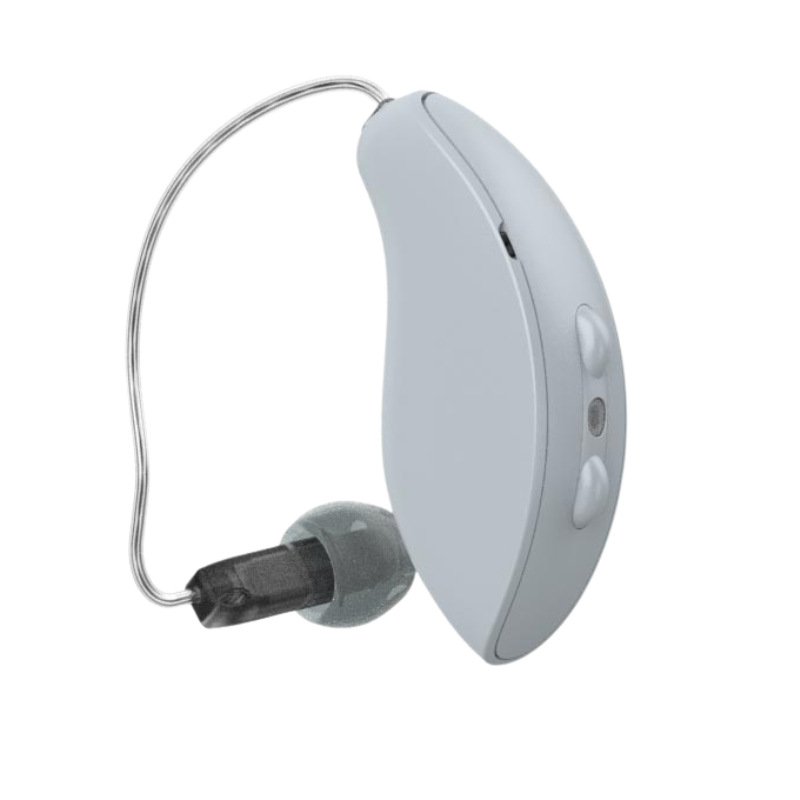Discover our wide range of hearing aids
Discover how our innovative hearing aid technology can revolutionize your ability to connect, empower your independence, nurture your relationships, and unlock a more vibrant life.


Modern Hearing Aids
A hearing aid is a small electronic device that you wear in or behind your ear. It makes some sounds louder so that a person with hearing loss can listen, communicate, and participate more fully in daily activities.
There are three basic parts to a hearing aid: a microphone, amplifier, and speaker. The basics haven’t changed for decades. What has change significantly is how a hearing aid manipulates the sound as it enters the hearing aid and eventually sends the signal into your ear canal. Theses advances include:
Automatic volume adjustments
Automatic adaptation to background noise
Built in FM, Infrared and Bluetooth technology
Water resistant technology
Hearing aids look better than ever before coming in a variety of shapes, colors and styles

Latest models in your inventory.
Browse our selection of high-quality hearing aids.
.png)
Rechargeable Hearing Aids
Hearing aid technology like most technology goes through stages of evolution. The most recent technological advance has been to the category of rechargeable hearing aids.
Although rechargeable hearing aids have been around for quite some time, they were unable to hold a charge for an extended period of time, often just a few hours. Technologically has advanced to the point where a rechargeable hearing aid can now hold a charge for days.
Ease of Use
Rechargeable hearing aids are Particularly useful if you have decreased dexterity or health issues that make handling small objects difficult. Place the hearing aid in the charger at night and in the morning it will be fully charged and ready for use.
Peace of Mind
Once they’ve charged overnight your hearing aids will be ready to work all day long. Many rechargeables also allow you to top off with a “quick charge” of an hour or less during the day that adds several hours of wearing time even if you’re streaming audio regularly.
Go Green
Rechargeable batteries are better for the environment. You may only need to replace the batteries once over a 3 – 4 year time span.
No Additional Costs
The cost to replace your rechargeable batteries is less than the cost to replace regular hearing aid batteries over the same period of time.
FAQs
Find answers to common questions about hearing aids, including compatibility, maintenance, and insurance coverage.
There is a strong relationship between age and reported hearing loss. About 18 percent of American adults 45-64 years old, 30 percent of adults 65-74 years old, and 47 percent of adults 75 years old or older have a hearing loss.
There are three basic styles of hearing aids. The styles differ by size, their placement on or inside the ear, and the degree to which they amplify sound. Behind the ear (BTE) hearing aids, In the ear (ITE) hearing aids, and Canal hearing aids (ITC).
Approximately 4,000 new cases of sudden deafness occur each year in the United States. Hearing loss affects only 1 ear in 9 out of 10 people who experience sudden deafness. Only 10 to 15 percent of patients with sudden deafness know what caused their loss.
If you have a question about your hearing, you’re not alone. Approximately 28.8 million adults in the United States alone could benefit from hearing aids. Are you one of them?
More than 12% of men and nearly 14% of women over 65 are affected by tinnitus. It is identified more frequently in white people.The prevalence of tinnitus is almost twice as frequent in the South as in the Northeast.


.png)


